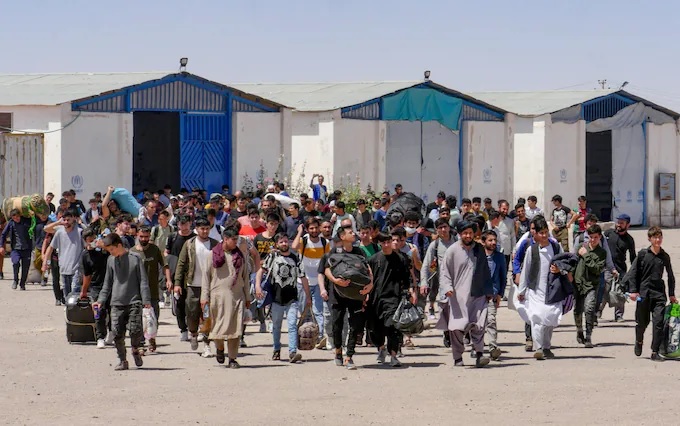
Iran Announces Plans to Deport 2 Million Afghan Refugees Amid Growing Economic Strain
Iran has announced plans to deport 2 million undocumented Afghan refugees over the next six months, citing economic pressures and the need to manage the influx of migrants. Ahmad-Reza Radan, Iran’s police chief, confirmed the deportation plans in an interview, stating that security forces and the Interior Ministry are coordinating efforts to address the situation. Afghan migrants make up a significant portion of the undocumented population in Iran.
For over 40 years, Afghans have sought refuge in Iran to escape conflict, poverty, and, more recently, the Taliban's control. The United Nations High Commissioner for Refugees (UNHCR) estimates that about 4.5 million Afghan nationals currently live in Iran, although local reports suggest the number could be higher. Many of these refugees do not have legal documentation, often working in agriculture and construction sectors.
In May, the Interior Ministry reported that 1.3 million irregular migrants had already been deported to Afghanistan in the past 12 months. Iranian officials, including Interior Minister Eskandar Momeni, have acknowledged the cultural ties between the two nations but stressed the strain on Iran’s resources, prompting the government to take action.
Protests and tensions have risen across Iran regarding the presence of Afghan migrants, with some Iranian citizens expressing concerns about competition in the labor market and strain on public services. Reports of social media campaigns calling for the deportation of Afghan refugees have also surfaced, further fueling the debate.
Human rights advocates and journalists have raised concerns about the growing hostility toward Afghan refugees. Jila Baniyaghoob, a journalist who has spoken out about migrant rights, reported receiving threats after advocating for more humane treatment of refugees. A petition signed by 540 activists and professionals has called for solidarity with Afghan refugees, urging authorities to address the economic challenges rather than focusing on deportations.
In an effort to curb irregular migration, Iran has also begun constructing a 74-kilometer concrete wall along its northeastern border with Afghanistan. The wall is intended to reduce illegal crossings, though doubts remain about its effectiveness given the 900-kilometer shared border between the two countries.
As Iran proceeds with the deportation plans, many Afghan refugees face uncertainty regarding their future. The situation remains tense, with ongoing discussions about how best to manage the refugee population while addressing Iran's internal challenges.
Stichworte







